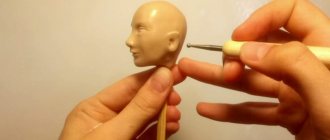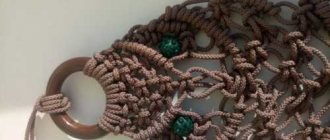Technical features of extruders
The device consists of several parts, and is divided into three sections:
- The first is responsible for receiving raw materials,
- In the second, plasticization and compression occur,
- In the third - pressing.
Grain processing in industrial extruders occurs at high temperatures: from 110 to 180°C, and pressure above 40 atmospheres. Such conditions are necessary for the breakdown of fiber, proteins and starch contained in whole grains. The whole process takes only a few minutes, which means the split protein does not have time to coagulate.
Another advantage of extrusion is the production of clean and safe feed: almost all types of bacteria and fungi die during heat treatment.
The grain extruder is equipped with a special chamber in which the products are pressed. It also contains a shaft with screw pressing, intermediate and feeding elements. The power of the device depends on the engine and rotor, which is responsible for the operation of the cutting unit.
A little history
Diagram of an extruder for plastic.
The extruder began to be used back in the nineteenth century. And mass production of this equipment began in the twenties of the last century. Extruders today are significantly different from what they used to be.
In modern industry, extruders are very popular, and you can choose from a wide variety of types. Buying a new extruder is quite expensive. But there are extruders that you can make yourself.
The easiest to manufacture are clay and feed extruders. To make other types of this equipment yourself, you must have at least some basic engineering knowledge. And these extruders don’t take much time to make, and the materials are inexpensive.
Types of homemade extruders
Industrial models of the device start at 45,000 rubles in price, which is not always acceptable for small farms and private farmsteads. To prepare complete and healthy feed for livestock and poultry, many farmers have learned to assemble the device themselves. There are several ways to make an extruder with your own hands:
- For large volumes of raw materials,
- From spare parts for agricultural machinery,
- From a vacuum cleaner.
Before you start manufacturing, you need to find diagrams and drawings. They will help you understand the intricacies and nuances of fastening and location of the main working units.
A homemade extruder will not only be cheaper. It can be made in a size suitable for the needs of the farm, equipped with additional figured knives or several matrices.
Manual extruder for plastic welding
A hand-held welding tool - an extruder - today is no longer something unusual or supernatural. Thanks to modern technologies, it has become possible to create such a tool with your own hands.
The extruder is designed to make permanent connections of various plastic products, which are carried out by feeding a molten mass of material into a heated bath formed by the edges of the samples being welded.
This tool is used for the production of containers, sheet products, and repairing damage to plastic structures, for example, soldering car bumpers made of plastic.
The extruder has no weak points, it has a long service life and is easy to operate. Enterprising people purchase semi-finished plastic products and use this tool to make unique designs. One of these projects can be about. A pontoon was used as a base for it.
Extruder for large volumes of feed
This device consists of:
- Receiving bunker,
- Motor and drive,
- Frames,
- Gearbox,
- cuff,
- cutting unit,
- Dosing screw with drive,
- Cylinder.
The chamber of the pressing unit is a cylinder into which the injection screw is inserted. The auger is divided into three parts: initial, middle and outlet. For greater strength, each of them is secured with a stud with a left-hand thread. The unit is covered with a casing made of steel sheet.
The frame is welded from a corner or pipe sections. The dimensions depend on the planned volumes of processed raw materials and the length of the cylinder. The pressing unit is installed on the frame and secured with several bolts. Next, we begin to manufacture the receiving hopper. Usually it is welded from steel sheets, and a hole is made in the lower part under which a tray is placed. Through it, the raw material flows from the receiver to the supercharger screw. To move the grain, longitudinal recesses are made in the lower part of the body. At the end of the screw section, a cutting unit is installed to regulate the size of the granules. It includes:
- bow hull,
- Matrix,
- Knives.
The knives are pressed against the matrix by a spring, and the shaft rotates using a drive and a driver. The finished product comes out through the holes in the matrix and is cut with knives according to the specified parameters.
The feed extruder processes grain only at high temperatures created by the operation of the motor and gearbox.
They are connected to the shaft and bow housing by a chain drive and attached to the frame. For safety, the electrical assembly can also be covered with steel cuffs. Temperature regulation is carried out by changing the position of the matrix, and control is carried out with a thermometer. Install it next to the cutting element.
DIY extruder for polypropylene
The development of technical progress has led to the emergence of various technologies that make it possible to produce products with improved performance characteristics.
One of the most popular processes at the moment is extrusion.
It represents the technological process of processing plastics, from which various parts are made, and also various profile products are produced.
The technology itself consists of preparing an alloy from polymer materials and then pressing it through special nozzles that give it a certain shape. The main element of the line for the production of plastic products is the extruder.
Operating principle and design
It should be said that extrusion is far from a new technology. Its history goes back more than six decades. During this time, a large number of machine designs were created, with the help of which its implementation is ensured. The operating principle of this device is based on the essence of the technological process itself.
The extrusion technological process is a complex physical and chemical process, which is affected by mechanical forces under conditions of high temperature and moisture . Heating of processed products occurs due to the fact that the mechanical energy generated during the fight against internal friction, as well as during plastic deformation, is converted into heat.
There are several variable parameters during the extrusion processing process. The most important ones include:
- composition of raw materials;
- humidity;
- its nature.
During the extrusion technological process, changes may occur:
- material temperature;
- pressure;
- intensity and duration of impact on raw materials.
Extruder operating principle
In itself, such equipment is an electromechanical device, the main purpose of which is to carry out the process of molding profile parts from plastic or its semi-finished products . The general device of a plastic extruder contains the following components:
- body of the heating system for polymer materials . Conventional resistive or induction systems can act as the main source of thermal energy when carrying out this technological process. When using the latter, the occurrence of high temperatures occurs due to the induction of high-frequency Foucault induction currents onto the body;
- load node Through this element, feedstock enters the housing cavity in various ways;
- working body . It creates the necessary pressure in the equipment, which ensures the movement of raw materials directly from the loading unit to the nozzles, which form finished products from polymer materials. When using an extruder, various physical principles are used, since this device can have different designs - screw, disk, piston. At the moment, screw extruders are most often used;
- extrusion head . In another way, experts call it a spinneret. It is this that ensures the shape of the products that is obtained upon completion of the technological process;
- mechanical drive . In this equipment it is represented by a motor and a gear system. Thanks to it, the creation and transmission of the necessary force to the working body is ensured;
- control and management system . Thanks to it, the required technological regime is maintained.
The starting material is usually granules and powder . They are loaded into the equipment, and then under the action of the working element they move into the working area of the housing.
There, under the influence of pressure, friction force and temperature, the feedstock supplied from outside is heated, and in the process of its melting, a state arises that is required by the conditions of the technological process.
During the movement of the feedstock in the cavity of the housing, it is thoroughly mixed to the state of a homogeneous homogenized mass.
Under high pressure conditions, the melt is forced out using forming heads and mesh filters. As a result, final homogenization is ensured and the material is given a given profile.
After this, the material is naturally cooled or a forced method is used, followed by polymerization. The end result is products that have the required configuration and have the specified mechanical and physical properties.
Types of extruders
Modern models of extrusion plants may differ from each other both in the design of the working body and in their purpose.
Single screw
Among all types of extrusion equipment, the most common is screw. Such machines satisfy all the requirements of the extrusion process.
In these units, a screw is used as the main working body. Experts call it an Archimedes screw .
Many people know this working element very well from home meat grinders.
When using an extruder for the production of plastic products, the screw blade captures the raw material in the loading zone, and then it moves sequentially along the entire length of the housing cylinder, starting from the heating zone through the homogenization and molding section.
Depending on the features of the technological map that the equipment has, as well as the type of raw material used for the production of products, screws can have several design options - conical, cylindrical and normal high-speed.
Augers that taper toward the exit can also be used. For this equipment, experts consider the ratio of the working diameter of the screw and its length as the main parameter. Augers also differ in the pitch of the turns and their depth.
The main disadvantage of a single screw extruder is that it is not always possible to use them.
For example, if semi-finished powder products are used as the starting raw material, then the presence of one screw in the equipment does not allow mixing the mass during the process of its melting and subsequent homogenization. In such cases, the choice is made in favor of twin-screw extruders.
Twin screw
The peculiarity of this equipment is that its screws are interlocked. Therefore, when using such extruders, it is possible for the screws to perform parallel and counter rotational movements. These working parts of the equipment can be straight or conical.
The use of such machines leads to the fact that during the heating process of the feedstock, its mixing and homogenization is carried out more thoroughly. Ultimately, a homogeneous and degassed mass arrives at the head for molding products.
The following point should be noted: in certain technological processes, extruders with a larger number of screws can be used - up to 4. In addition, a planetary automatic machine is often used, when the number of screws rotating around the central screw reaches 20.
The need to use such equipment arises when certain types of plastics are used as feedstock, which tend to break down when exposed to high temperatures. In other words, they may lose their basic physical qualities. Thus, the use of such extruders ensures heating of raw materials due to friction and high pressure.
Production of PVC profiles
Currently, plastic and composite profiles are in demand. In most cases, manufacturers make them using the extrusion method.
https://www.youtube.com/watch?v=JDVc_Yti8bw
To manufacture such products, depending on the material used, as well as the complexity and shape of the product, single or twin screw machines are used, which have appropriate molding heads.
The range of products produced using extruders is quite wide, ranging from thin threads and strips to sheets of large panels that have a profile of complex geometry. Plastic windows and doors, produced today by many companies, are assembled using PVC profiles, which are made on extrusion equipment.
When producing PVC profiles, many manufacturers add special components to the polymer composition, which makes it possible to produce complex composites. For example, today many manufacturers produce wood-plastic products, which are often used for the manufacture of various building structures.
Pipe manufacturing
In an area such as the production of tubular products, an important condition is the absence of gas bubbles in the homogenized mixture. For this reason, manufacturers equip extruders that are used in the production of such products with degassing systems. In most cases, screw installations are used.
Among other things, barrier screws are used, which ensure reliable separation of the solid semi-finished product from the completely melted one.
Due to this, the homogeneity of the composition is maintained, which has a positive effect on the quality of the manufactured pipe products and its performance characteristics.
Extruders for polyethylene
All films made from polymer materials are produced by companies exclusively using the extrusion method. To produce such products, a blow molding extruder is used.
For equipment used for the production of stretch film, the forming unit may look like a narrow slit.
Extruder made from spare parts for agricultural machinery
To make this device, you must have:
- Electrical engine,
- Gears from a tractor gearbox,
- Rod, diameter 5 mm, from a hydraulic cylinder,
- Wire, 8 mm thick,
- Sheet metal.
To make a cylinder, several gears are welded together. The result should be a screw with a diameter of about 6.25 cm. Next, a wire is wound onto it at variable pitches. The step width gradually decreases from 2.4 cm to 2 cm. All elements are welded, and the seam is cleaned with a grinding machine.
The next stage: turning the axle boxes on a lathe. One is made for the auger, the second for the gear shaft. When the elements are ready, the parts are welded together in the following sequence: shaft, axle boxes, bearing, auger. The extruder head is attached to the latter using a die.
The assembly of the feed extruder begins with welding the frame on which the motor is mounted. It is connected to the working unit and the starting element using a chain drive. A loading hopper is placed on top: it can be either a bucket or a box welded from iron. At the opposite end, a form is installed to compress the processed mass. Passing through the die, the grain is pressed through the holes and enters the dispenser.
A grain extruder operates on the principle of a meat grinder, and the size of the granules depends on the shape and size of the holes in the die.
Technological differences
It is still necessary to highlight several rather important points, in particular this concerns the dry extrusion procedure, which directly depends on the thermal energy released by the device itself, generated during operation. It also remains possible to involve steam in the process, for which an individual chamber is available. Steam is necessary to increase the wear resistance of equipment. The technology is characterized by high speed of work; the procedure is carried out in only 30 seconds. A plastic welding machine can perform the following operations with raw materials in such a short period of time:
- grinding;
- dehydration;
- mixing;
- disinfection;
- stabilization;
- increase in volume.
To make your own manual extruder at home, you need to purchase a certain list of parts:
- auger of the required shape;
- electric motor;
- housing for the device;
- feed capacity;
- output capacity;
- vacuum chamber.
To make a tool for welding plastic products with your own hands at home, it is enough to understand the procedure for creating an extruder and its working principle.
Extruder from an old vacuum cleaner
For production you will need:
- Housing and motor from a vacuum cleaner,
- plywood sheet,
- Steel blank for knives,
- Metal disk,
- Wooden pins,
- Fasteners and bushings.
This device is not very powerful, so it is most often used to prepare feed for a small number of poultry, rabbits, piglets or small cattle.
How to make a grain extruder: a square is cut out of a sheet of plywood - a base with a side of 30 cm. A motor is installed on it so that the shaft is 4 cm below the base. For the manufacture of knives, steel grade STZ or higher is used, or they are machined from car holders. The thickness of the knife should not be less than 1.5 mm, and the length and width should not be less than 20 * 1.5 cm. The knife should be sharpened in the direction of the rotating axis. For greater efficiency, the workpiece is shaped like a propeller or the angle of the corner edges is changed.
To attach the cutting element, a hole is drilled on the motor axis, and a regular bushing acts as a fastening element. The working chamber is made of metal sheet. Container dimensions: 70*6 cm. The sheet is bent into the shape of a cylinder, and the upper and lower parts are bent outward. Flanges 1 cm wide should form. They are needed to secure the chamber and hold the sieve. Three pins are installed at the bottom of the cylinder.
The mesh size of the sieve determines the size of the finished granules. The smallest is used to obtain feed flour. A receiving hopper with dampers is welded above the working chamber. With its help, you can regulate the volume of supplied raw materials.
Operating principle
A welding extruder is a specialized apparatus for so-called extrusion welding, which is used to join polymer materials of various classes - high-density polyethylene (HDPE) and low-density polyethylene (HDPE), polypropylene, polyvinyl chloride (PVC) and other plastics most commonly used in everyday life and industry.
Extrusion welding is the process of joining polymer materials using a mass of material melted to the consistency of thick sour cream that is homogeneous with the ones being welded or similar in physical and chemical properties.
Unlike the more well-known welding of metals, joining plastic parts by extrusion does not involve melting the edges of the parts being joined, although heating to a certain extent still occurs.
The seam is formed when the semi-molten extruded mass hardens and sets with the edges. In this case, high strength of the welded joint is achieved - up to 0.8 of the strength of the base material.
Welding plastic with an extruder is most often used in plumbing - for connecting water pipes, in construction, in various works, the purpose of which is the manufacture of any plastic structures - tanks, pontoons, greenhouses.
The production of the extruded mass is carried out either from polymer granules - the starting material for creating any plastics, or from so-called filler rods, which are ground to a granular state inside the extruder itself.
In some (not all) models, the role of a rod can be a narrow piece of the same material that is planned to be welded. For example, when welding a product made of polypropylene sheets, you can use an unnecessary piece of polypropylene as a rod, but not other plastic.
Most Western-made welding extruders are designed to be used with filler material from the same manufacturer. Domestic developments are less demanding on the additive. A manual welding extruder is often called an extrusion gun in everyday life.
Recommendations for use
The grain extruder is installed on a flat, flat surface. It is advisable to use the device in a room with low humidity and good ventilation. The grain is fed evenly and constantly, otherwise the compartment with the press will be overloaded. To adjust the size of the finished granules, change the sieve or tighten the matrix bolt.
Finish the work by gradually reducing the speed. After each use, the device must be disassembled and washed to avoid clogging of the working and cutting units with particles of dried food.
A little about the extruder for welding
Thanks to the manual welding extruder, you can do many different types of work with polypropylene and polyethylene.
At first it may seem that these materials are not very common and are rarely used.
But in reality they are used in many areas. From similar materials, using this type of manual extruder, systems are made for purifying water, various types of containers, etc. Mostly these materials will be used as auxiliary materials, but in any case it is impossible to do without them.
Manual welding extruder. We weld plastic
In the practice of production activities of small enterprises involved in packaging various products, as well as when laying plastic pipes, a tool is needed that can be used to reliably connect materials with a low melting point. The class of such materials is large - these are low-density polyethylene (HDPE), polyvinyl chloride (PVC), polypropylene, etc. A manual welding extruder can handle all this work.











